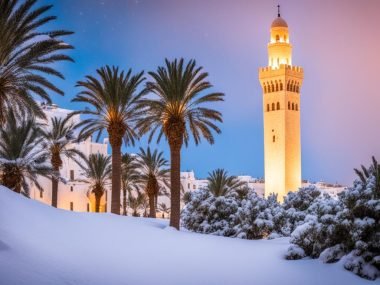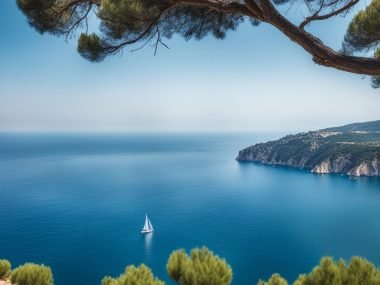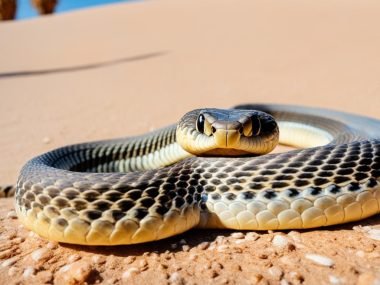Have you ever heard people mix up Malta and Tunisia? These two places are close but are very different. It’s important to know where each one is and what makes them special. This helps us understand why Malta is not part of Tunisia.
Malta is its own country in the middle of the Mediterranean Sea. Tunisia, however, is in North Africa and touches the Mediterranean too. Malta has a long history that starts in 5900 BC and is mostly Caucasian. Tunisia has a mix of Arab and Berber cultures.
Key Takeaways
- Malta and Tunisia are separate sovereign states.
- Malta’s location is in the central Mediterranean, distinct from Tunisia’s North African position.
- Malta holds a rich history dating back to around 5900 BC.
- Both nations have fascinating cultural backgrounds with unique demographic compositions.
- Understanding these geographical facts helps clear the misconception that Malta is part of Tunisia.
Introduction to Malta and Tunisia
Malta and Tunisia have rich histories and vibrant cultures. They are shaped by their unique places in the world. Let’s explore where they are and their pasts.
Geographic Locations
Malta lies in the central Mediterranean, just south of Sicily and near Tunisia. Its spot made it a key harbour in history. Tunisia is in North Africa, touching the Mediterranean Sea, Algeria, and Libya. Its location made it an important link between Africa and Europe.
Brief Historical Background
Malta and Tunisia have different histories but are close by. Malta’s history goes back to 5900 BC. It saw the Phoenicians, Romans, and British rulers. The Malta flag shows its mixed culture. Tunisia, on the other hand, saw Phoenicians, Romans, and French rulers. This mix made Tunisia culture diverse.
“The historical ties between Malta and Tunisia were formally recognised when both countries established diplomatic relations in 1967, marking the beginning of a mutual understanding and cooperation.”
The Malta population is 519,562 as of 2021. This shows it’s a small place with a big culture. Tunisia’s past shows how it has adapted and thrived through various rulers. This has made it a strong and lively country.
Is Malta an Island Near Tunisia?
Malta sits in the middle of the Mediterranean Sea. It is very small but has many people living there. People often wonder about Malta’s connection to places like Tunisia.
The Mediterranean Context
Malta is right in the centre of the Mediterranean Sea. This spot is great for sea travel. It makes the island important for ships and its location very special.
Proximity to African Coastline
Malta is quite near to Africa. It’s only about 284 km from Tunisia and 333 km from Libya. This means Malta and African countries have been close for a long time.
Distances from Key Landmarks
To show where Malta is:
- 284 km east of Tunisia
- 333 km north of Libya
- 93 km south of Sicily
These facts show Malta’s important spot in the Mediterranean Sea.
Historical Connections Between Malta and Tunisia
The history between Malta and Tunisia is rich and complex. Both countries share a past filled with many rulers and mutual cultures. This has shaped the strong bonds they have today.
Diplomatic Relations
Malta and Tunisia became closer after Malta became independent in 1964. Since then, they have worked hard to strengthen their relationship. They signed trade deals and held cultural events to keep their connection strong and lively.
Shared Historical Influences
Malta and Tunisia have long-standing ties beyond recent diplomacy. They were both ruled by the Phoenicians, Carthaginians, and Normans over time. These rulers added shared cultural parts to each country. This shows how long their connection has lasted.
Maltese and Tunisian Languages
The link between Malta and Tunisia is also seen in their languages. Maltese comes from a Sicilian-Arabic dialect and is similar to Tunisian Arabic. This shows how their histories and cultures are closely knit. It reflects how different influences have mixed over the ages.
We can also understand the Malta-Tunisia relationship by looking at Malta’s history. Learning about Malta’s people and rulers helps us see how close Malta and Tunisia are. Knowing about Malta facts and Tunisia history gives a full view of our shared past.
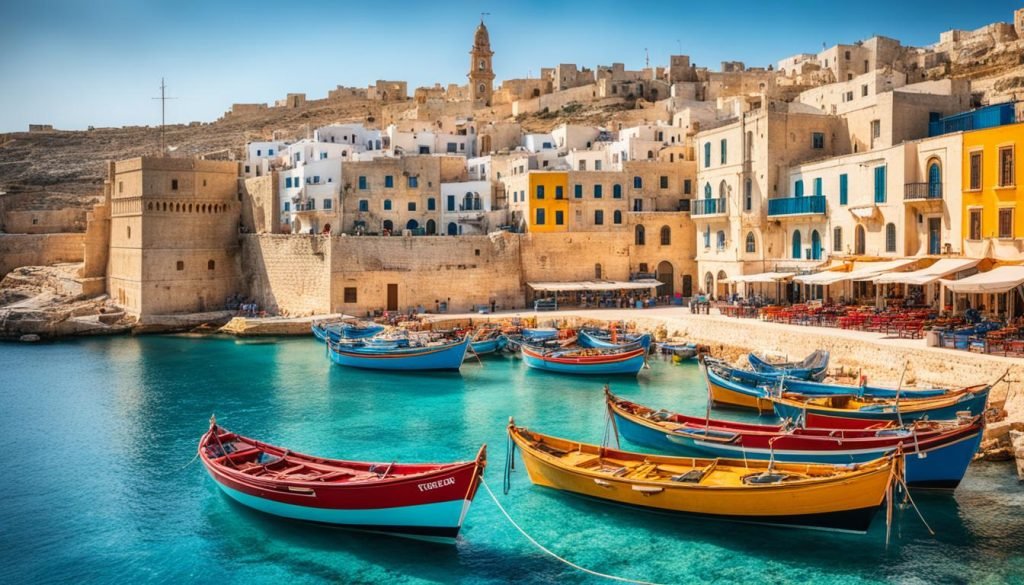
Modern Relations Between Malta and Tunisia
Malta and Tunisia have strong ties today. They work together well in different ways. This helps both countries grow and thrive.
Embassies and Diplomatic Missions
The countries have embassies in each other’s lands. These embassies are key for their talks. They are part of the Union for the Mediterranean.
This helps bring peace to the area. Their embassies make talking and working together easier. It makes the Malta location very important to Tunisia.
Trade and Employment Agreements
Economic deals are a big part of their relationship. These deals help both countries do better. They create jobs for Tunisians in Malta.
These efforts bring benefits to both sides. Knowing about Malta’s place in the sea is key. It shows why Malta is a good partner.
Working together in business is important. In our world today, such teamwork is needed. It helps build strong and helpful bonds between countries.
Understanding Malta’s Geographic Location
Malta is an island group in the Mediterranean Sea. It’s between Europe’s southern tip and Africa’s north. This spot made Malta very important over the years.
Coordinates of Malta
Malta’s exact spot is 35°54′N and 14°31′E. These numbers place Malta between Southern Europe and North Africa. It’s 80 km south of Sicily, Italy. This makes Malta a bridge between Europe and the Mediterranean area.
Position Relative to Europe
Malta is close to big European cities. Its spot has made it key for trade and talks between nations. It was also important for ships in the Mediterranean. The sea around it added to its value in Europe.
Position Relative to North Africa
Malta is also near Africa, 284 km from Tunisia. This closeness helps Malta connect Europe and Africa. The sea between them makes Malta a central place for two continents meeting.
Malta’s unique spot shapes its people and global ties. The people of Malta gain from being at this crossroads in the Mediterranean.
| Aspect | Details |
|---|---|
| Coordinates | 35°54′N, 14°31′E |
| Distance to Sicily | 80 km |
| Distance to Tunisia | 284 km |
| Neighbouring Region | Southern Europe, North Africa |
Malta’s Demographics and Culture
Malta is a small island with a big heart. It’s known for its unique and varied population. Everyone here adds something special to our vibrant culture.
Population Statistics
As of 2021, most people in Malta are Caucasians, about 89.1% of us. This shows our close ties to Europe and its history.
Religious and Cultural Practices
Christianity, especially Catholicism, is big here. It’s a major part of who we are. You’ll see this in our daily lives and our many festivals and holidays.
The Malta flag also means a lot to us. It shows our history and traditions. It’s a sign of how strong and united we are. You’ll see it flying high during our celebrations and festivals.
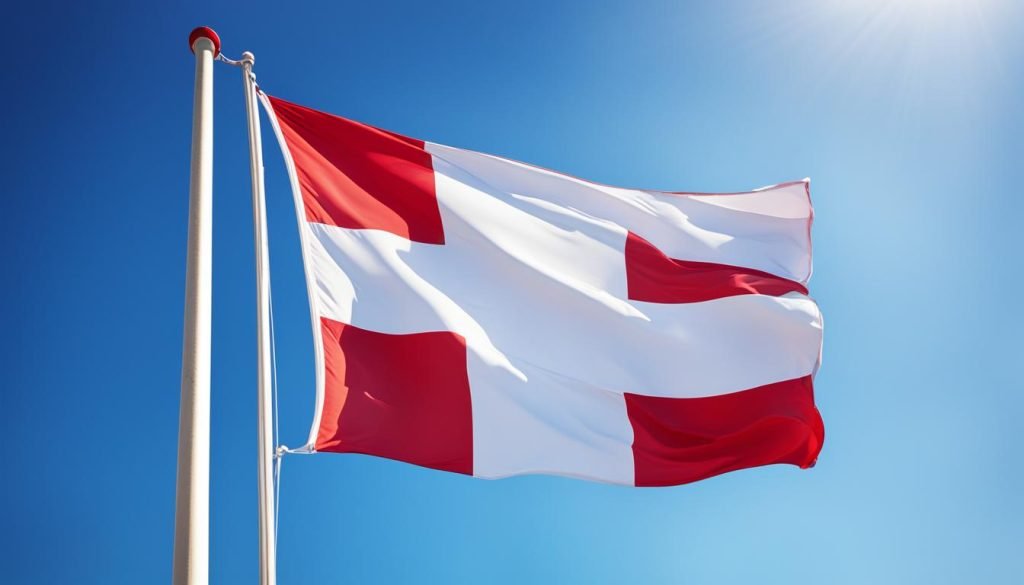
There’s more to Malta’s culture than just our religion and flags. Our daily life is a mix of Mediterranean and European styles. This can be seen in our buildings, food, and gatherings. These Malta facts give you a peek into our rich traditions.
Exploring Tunisia’s Geography
Tunisia is in North Africa. It has fertile plains in the north and a big Sahara desert in the south. The country has beaches by the Mediterranean Sea and borders Algeria and Libya.
Tunisia’s Location and Borders
Look at a Tunisia map and you’ll see it at Africa’s northern tip. It’s next to Algeria on the west and Libya on the southeast. The north and east sides are by the sea. This spot has brought many cultures to Tunisia, making its history and culture very rich.
Tunisia’s Islands and Coastal Features
Tunisia’s long coast has many islands. The most famous are Kerkennah Islands, Djerba, and the Galite Islands. Each Tunisia island is special. Djerba has green lands, and the Galite Islands have rocky areas. The coasts have lovely beaches and lots of sea life, great for visitors.
Tunisia is special because of where it is and its islands. These make the country’s geography very interesting. They help us learn more about Tunisia history and its mix of cultures. Tunisia’s geography is key for its stories from the past to today’s tourism.
| Feature | Description |
|---|---|
| Location | North Africa, bordered by Algeria, Libya, and the Mediterranean Sea |
| Key Islands | Kerkennah Islands, Djerba, the Galite Islands |
| Geographic Diversity | Fertile plains in the north, Sahara desert in the south |
| Strategic Importance | Historic crossroads of cultures; significant for maritime routes |
Is Malta In Tunisia?
People often wonder, “Is Malta inside Tunisia?” This thought comes from some mix-ups. They both have historical links and are close by.
Clearing the Misconception
First off, Malta is not part of Tunisia. If we look at a map, we’ll find Malta as a unique island in the Mediterranean Sea. It’s south of Sicily and to the east of Tunisia. Even though they’re near each other, Malta is its own country with a separate government.
Geographical Clarification
To make it clearer, let’s see where Tunisia is. Tunisia is in North Africa, touching the Mediterranean Sea. Algeria is to its west, and Libya to the southeast. Malta sits about 284 km away from Tunisia, clearly showing it’s a different place.
Why the Confusion Exists
Why do people get mixed up? Both places have seen a lot of history. They’ve been shaped by many empires and cultures. This has led to some shared language, traditions, and building styles. However, by looking at maps and understanding their histories, it’s clear. Malta and Tunisia, though close, are separate.
Conclusion
Malta and Tunisia lie close to each other in the Mediterranean. Yet, they are very different. Each has its own special culture, history, and geography. Knowing Malta is a group of islands south of Sicily helps. It shows its difference from Tunisia’s North African coast.
Malta’s history is filled with stories from different leaders and cultural practices. These have shaped its people and identity. This is shown by the Malta flag. Tunisia has its own rich history too. It has been influenced by ancient groups like the Phoenicians and Romans. This makes Tunisia special in Africa.
Malta and Tunisia have old ties and present-day links. But, each follows its own path in the Mediterranean. By exploring, we see how deep their cultural and historical stories go. We learn Malta is not part of Tunisia. Yet, both add greatly to the region’s history and culture.



